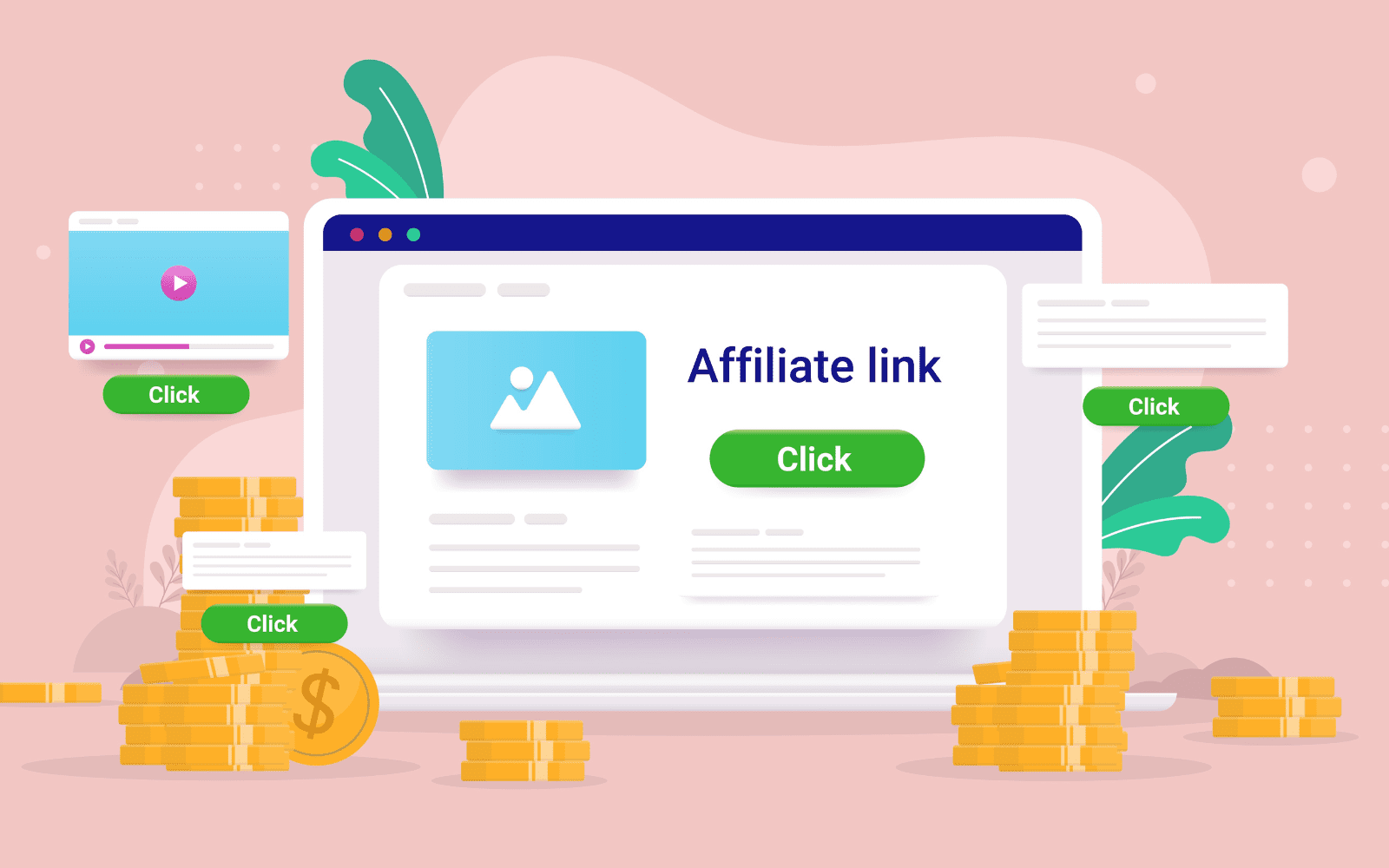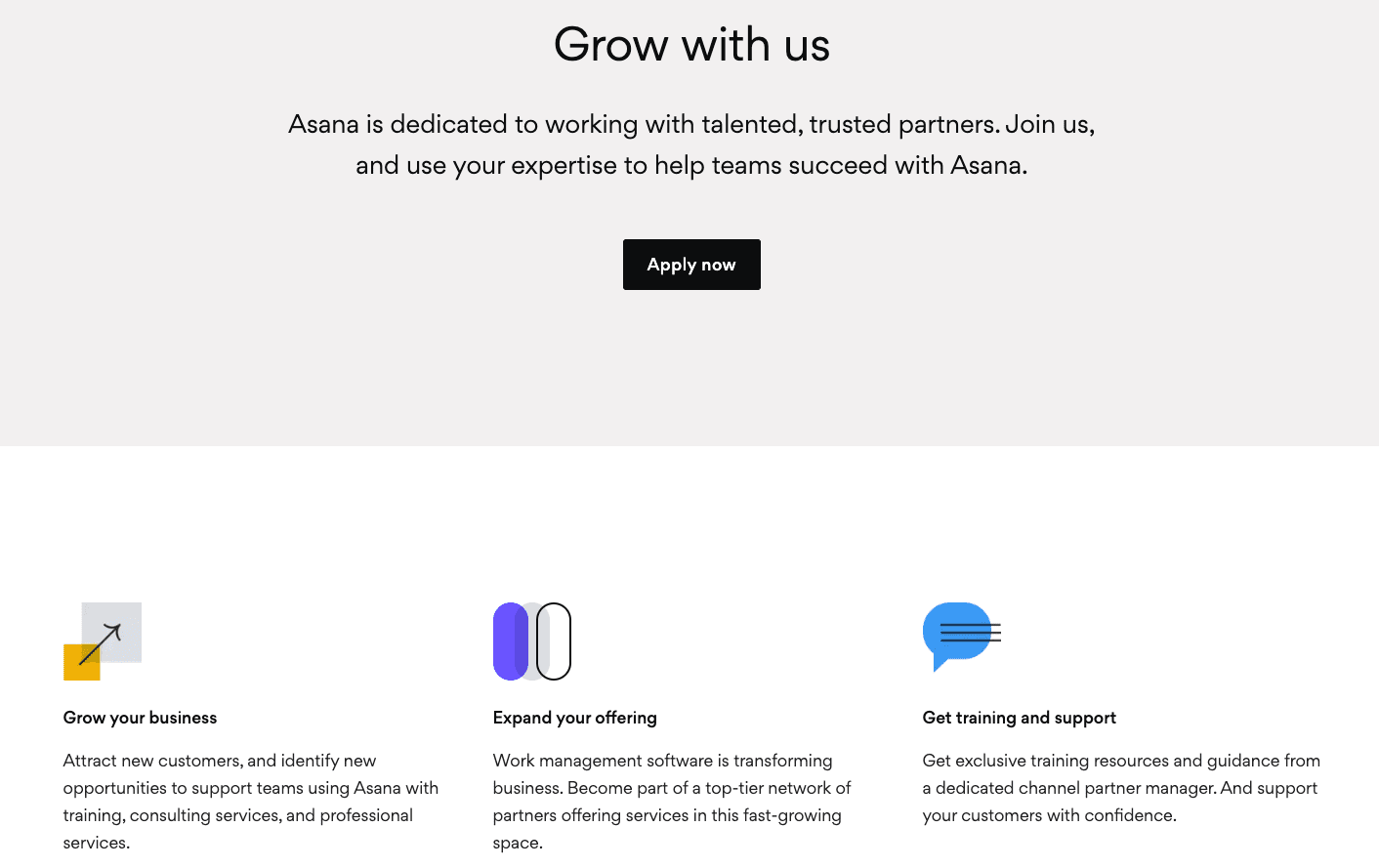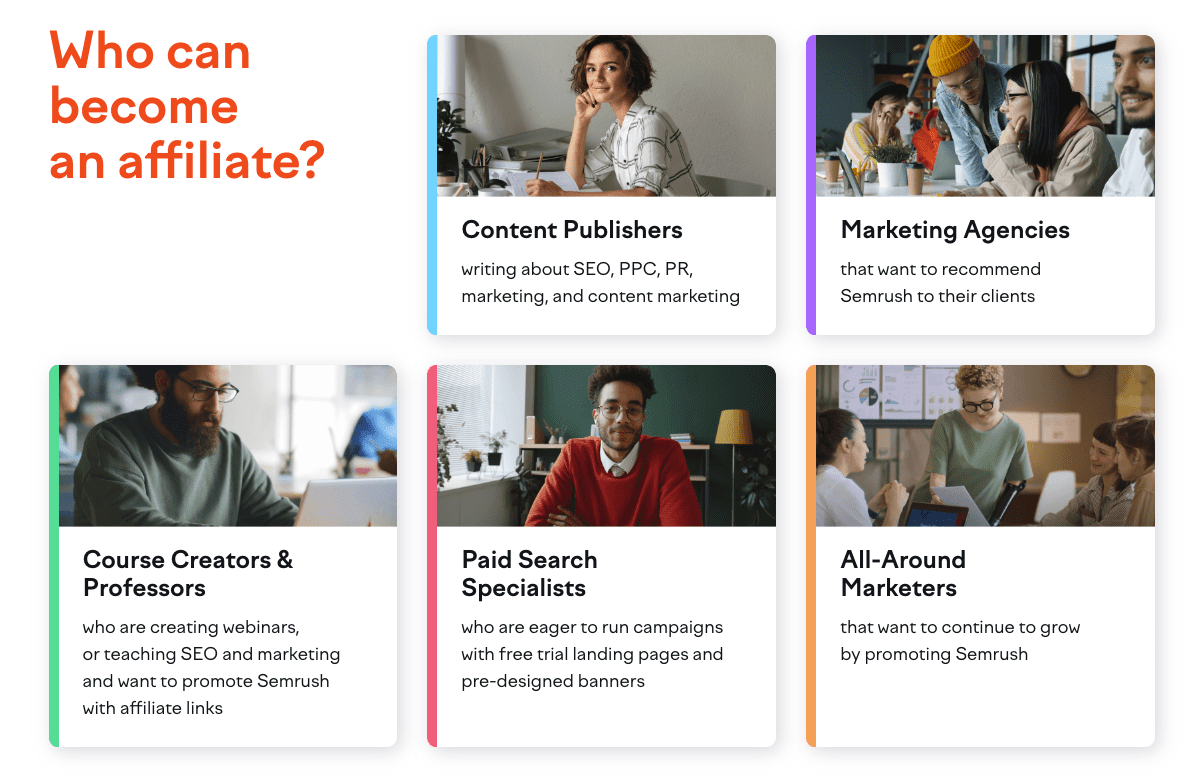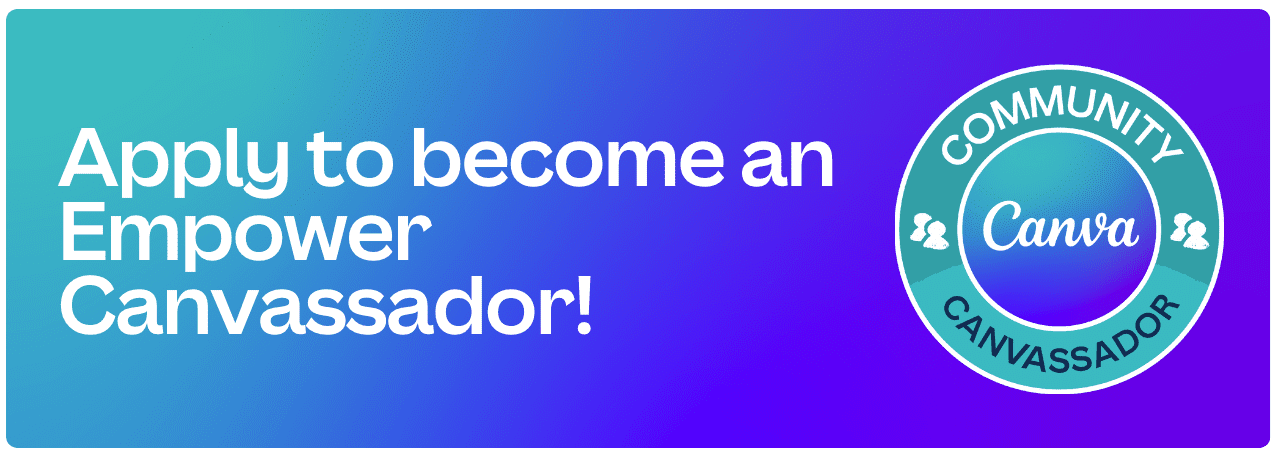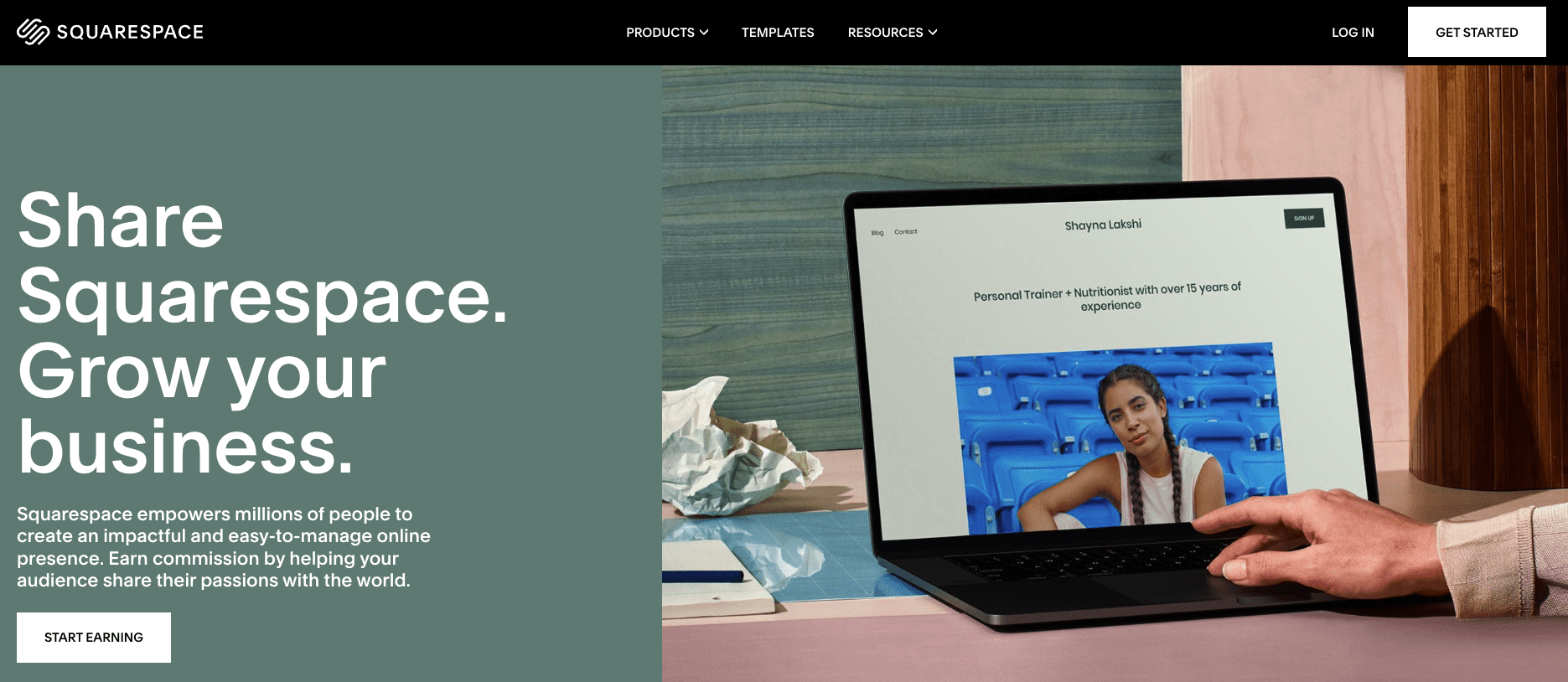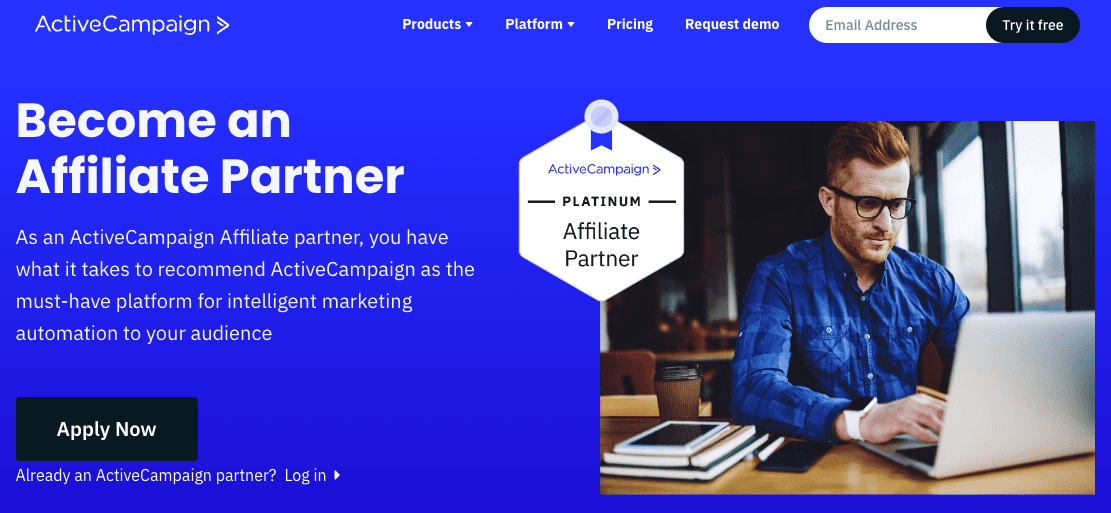Top 10 Affiliate Marketing Software Platforms To Maximize Sales In 2024 via @sejournal, @lorenbaker
Affiliate marketing has been experiencing explosive growth in recent years, so it’s essential now more than ever for brands to run affiliate programs of their own.
It involves brands hiring affiliates to promote their products and services and rewarding them with a commission from every sale.
As such, affiliate marketing is an excellent low-cost and low-risk way for brands to drive sales and brand awareness without hiring an in-house advertising and marketing team of their own.
Affiliate marketing spending worldwide is estimated at around $14 billion in 2024 – and the industry is predicted to reach a worth of over $38 billion by 2031.
Affiliate Marketing And SEO
Affiliate marketing and search engine optimization (SEO) both share a common goal of attracting relevant and high-quality traffic to a site with the goal of increasing sales.
As such, both of these marketing activities shouldn’t be perceived as two separate, competing entities.
Instead, you should look at them as one and the same that work together in perfect harmony to increase website traffic and generate more revenue.
The most successful publishers in the affiliate marketing space combine the two to get the best of both worlds.
SEO affiliate marketing involves choosing the right products and affiliate programs that attract the most search traffic and offer the best commissions.
Publishers often make the most of affiliate marketing by creating content that adds real value for their readers and prioritizes their experience.
Publishers often do this by creating “Best of” or “Top X” oriented posts that address their audience’s needs and pain points, while, at the same time, allowing them to monetize their content by using affiliate links throughout the posts.
By adding relevant and contextual affiliate links in such posts, publishers foster an authentic user experience that puts their readers first.
This is one of the most significant advantages of affiliate marketing compared to alternative marketing methods such as sponsored posts.
Today’s consumers are increasingly distancing themselves from heavily business-oriented content, as it’s often perceived as inauthentic and disingenuous.
By focusing on high-quality content that adds value to readers and combining it with relevant and contextual affiliate links, everyone wins!
Additionally, Google rewards publishers who create original content and add real value for their readers.
They reward such publishers by placing them higher in search results and driving more traffic to them.
But, in today’s highly competitive and increasingly dynamic market, how can brands find the time to manage and grow their affiliate marketing program?
The answer is with the help of the right affiliate marketing software that streamlines the entire process.
Once upon a time, running a successful affiliate marketing program meant manually managing every aspect – a time-consuming and inefficient process.
Thankfully, these days, affiliate marketing software and solutions have evolved to offer all the necessary tools in a single place, which simplifies the whole process and enables brands to optimize their programs and focus on growth.
Therefore, brands need to utilize the right affiliate marketing software to stay competitive and maximize ROI in today’s highly competitive affiliate marketing space.
This article will go over what affiliate marketing software is and what makes a great affiliate software platform.
We’ll also review the top 10 affiliate marketing software platforms that brands can use to take their affiliate program to the next level.
What Is An Affiliate Marketing Software?
In a nutshell, affiliate marketing software is a comprehensive tool that facilitates all aspects of affiliate marketing program management.
It allows brands to track, manage, and grow their affiliate marketing campaigns.
Most affiliate marketing software platforms share standard features such as affiliate onboarding, collaboration with affiliate partners, affiliate tracking and reporting, and referral, cost, and commission payment management.
What Makes A Good Affiliate Marketing Software Platform?
Though most affiliate marketing software platforms share many of the same features, what sets apart the good platforms from the bad is what’s important.
For starters, the actual platform must have an intuitive and user-friendly interface.
An affiliate marketing platform can boast all of the best affiliate tools and features available.
Still, it’s a moot effort if the dashboard is complicated for most people.
Additionally, since brands usually utilize a variety of Software as a Service (SaaS) platforms for ecommerce and affiliate marketing, affiliate marketing software platforms need to offer tons of third-party SaaS integrations.
The best affiliate marketing software platforms offer robust tracking and reporting capabilities.
Brands need to be able to precisely track their affiliate sales and access real-time granular data to measure the ROI of their affiliate campaigns effectively.
Additionally, a good affiliate marketing platform will provide brands with all the affiliate tools they need to launch, manage, promote, and scale their affiliate programs, such as flexible commission management and customizable real-time affiliate tracking and reporting capabilities.
At the same time, they should offer their clients peace of mind by providing the highest level of fraud detection and other security features.
Lastly, the best affiliate marketing software platforms mean nothing if there isn’t quality customer service available 24/7 to back it up. Readily available customer assistance is equally important for brands as it is for affiliates.
Top 10 Affiliate Marketing Software
1. Refersion
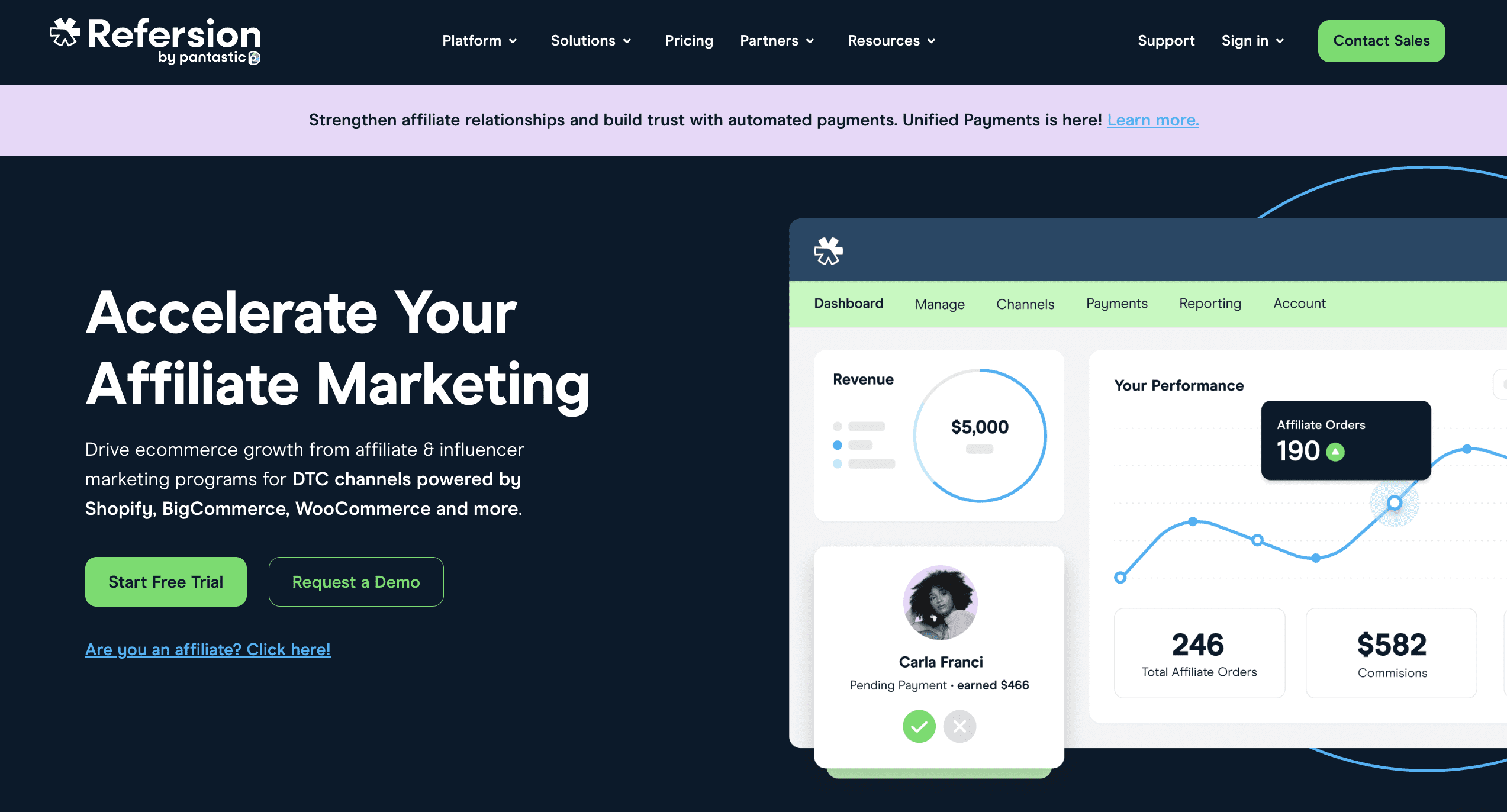 Screenshot from refersion.com, August 2024
Screenshot from refersion.com, August 2024With over 60,000+ registered merchants, 6.6 million affiliates managed, and $2 billion in affiliate revenue tracked, Refersion is one of the leading affiliate marketing software platforms on the market.
Its robust and highly personalized dashboard allows brands to manage all aspects of their affiliate program, such as monitoring all aspects of their affiliate activity with extensive real-time reporting capability.
Refersion offers brands all the tools they need to scale and promote their affiliate programs, such as managing commissions, payouts, and providing simplified tax automation. It also offers easy integration with popular tools like Shopify, WooCommerce, and BigCommerce.
While Refersion does come with a higher price point than some competitors – starting at $99 per month – it’s hard to find a solution that offers the same level of top-notch affiliate tools, marketplace, and customer service.
Pricing:
- The professional tier starts at $99/month (if paid annually) for up to 50 monthly order conversions.
- The business tier starts at $249/month (if paid annually) for up to 200 monthly order conversions.
- The enterprise tier is available with unlimited monthly order conversions – you’ll need to contact Refersion for pricing details.
2. Impact
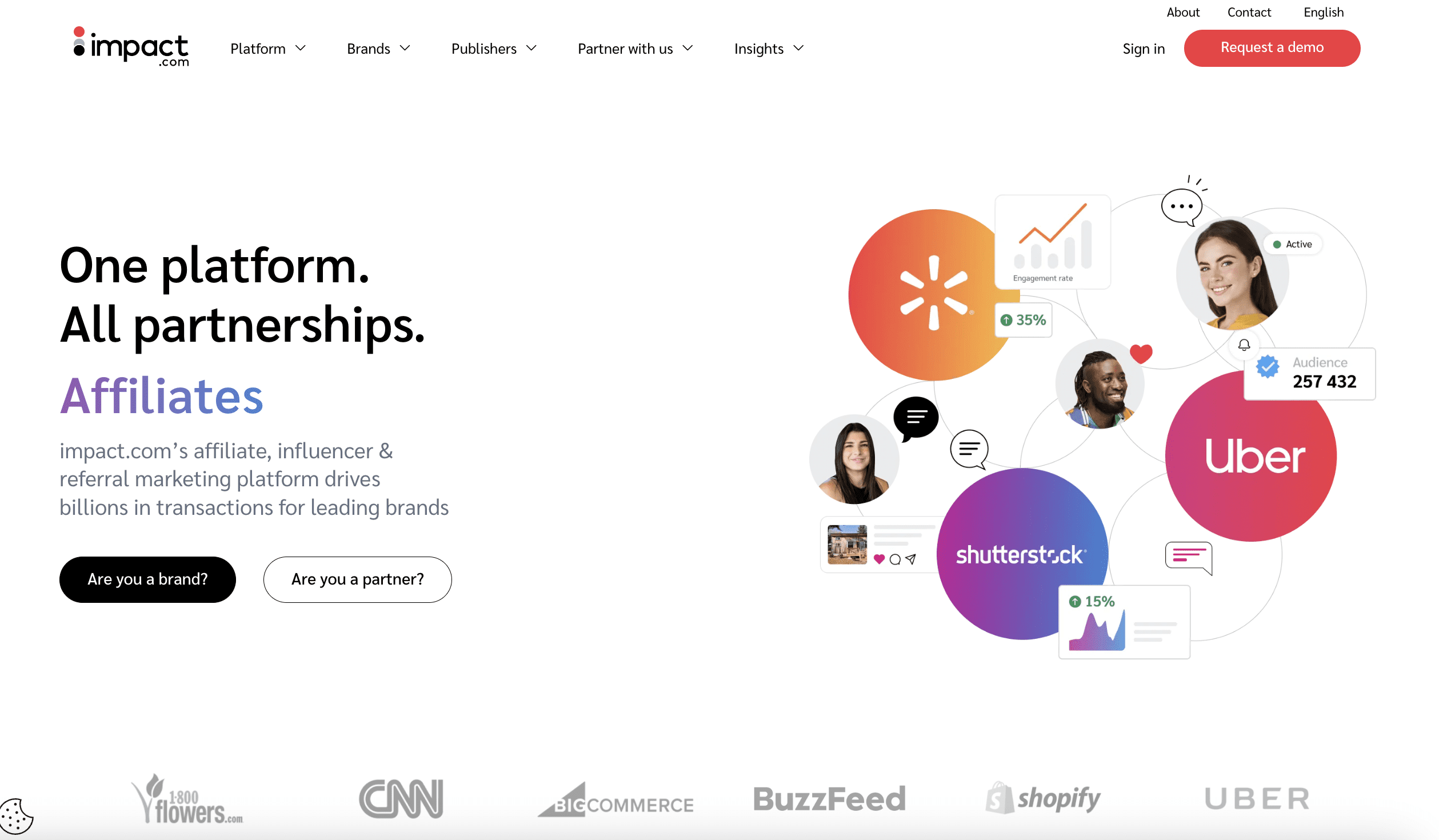


Impact is one of the biggest affiliate marketing software platforms for cloud automation.
Its signature product, the Impact Partnership Cloud, allows brands to automate their affiliate and influencer marketing campaigns. It offers a marketplace where brands can connect with a network of affiliates, influencers, ambassadors, and other possible partners.
The platform’s tools also include dynamic commissioning, reporting, advanced analytics, and third-party integrations for companies to track and manage their affiliate programs.
However, pricing is not readily available, and you must contact the Impact sales team for a custom quote.
Pricing:
- Custom quotes are available upon request.
3. Tapfiliate
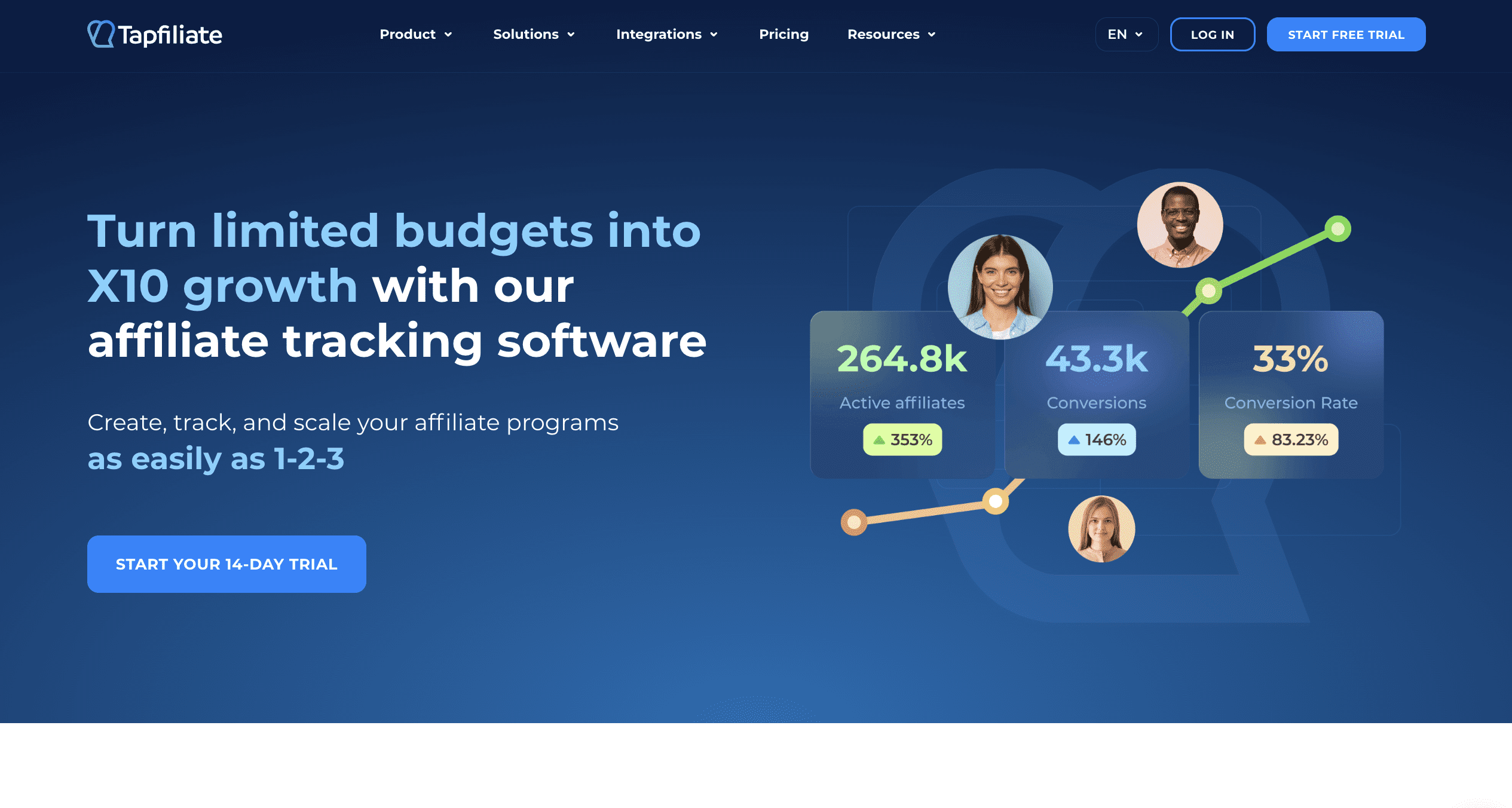


For businesses primarily operating and generating their revenue on ecommerce SaaS platforms, Tapfiliate may be a great choice.
It features a range of automation capabilities, including an autopilot mode that can automate things such as onboarding new affiliates, sharing via social media, or even drip campaigns.
Tapfiliate easily integrates with major ecommerce players like Shopify and WooCommerce, and offers advanced tracking and reporting capabilities. However, most of the features are accessible only through the Pro plan, which starts at $149 a month – nothing to sneeze at.
Pricing:
- The essential plan starts at $74/month for 1 team member and basic features.
- The pro plan starts at $124/month for 5 team members and more advanced features.
- The enterprise plan offers custom pricing for unlimited team members, unlimited tracking requests, a dedicated personal manager, and more.
4. Awin



Awin, previously known as Zanox, merged with Affilinet in 2017 to become one of the largest affiliate marketing platforms, providing “unlimited access to over 1M vetted partners.”
It features a handful of marketing and reporting features you’d expect from such an extensive network, like tools for cross-device tracking, real-time reporting, and automated compliance management.
The platform’s Awin Access program is an interesting option for smaller businesses or teams newer to affiliate marketing, as it offers a straightforward setup process and flexible pricing to make joining the network easier.
Registration is free on Awin, but it uses a performance-based pricing model. This means brands pay a predetermined cost-per-acquisition (CPA), and specific pricing details are only available upon request.
Pricing:
- Custom quotes are available upon request.
5. CAKE
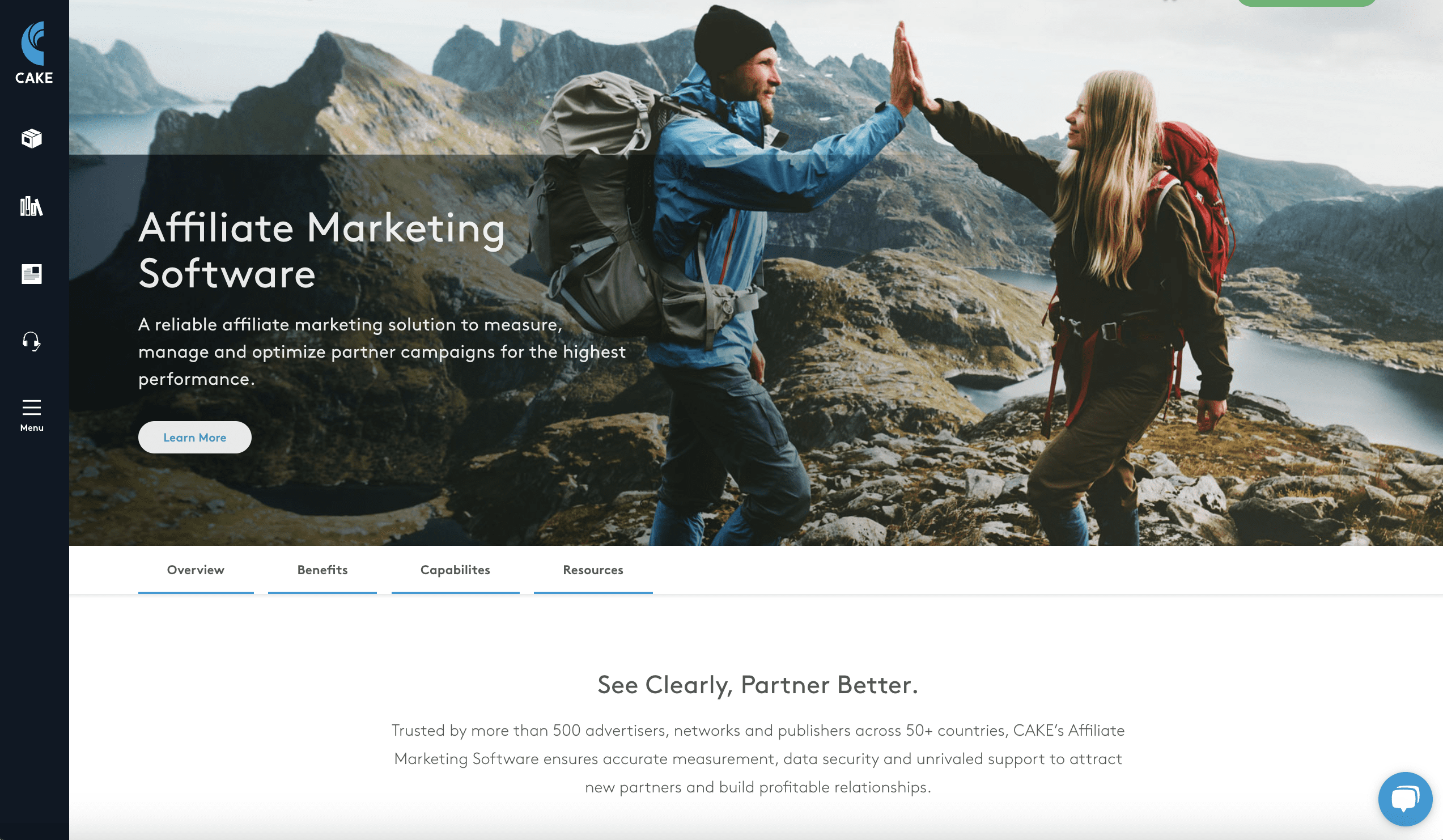


CAKE is another SaaS-based affiliate marketing platform, meaning you can access it from anywhere (with an Internet connection).
CAKE partners with a bunch of partners to offer a variety of streamlined and automated features. It’s known for its great tracking and reporting capabilities, which enable you to follow and optimize your campaigns in real time.
The platform boasts more than 500 advertisers, networks, and publishers across 50+ countries, and it offers 24/7 customer support to its users. It has customizable features, granular data analysis, and impressive fraud protection to give customers peace of mind.
Unfortunately, CAKE’s pricing is not readily available on its website. It also doesn’t feature any pre-made promotional tools for marketers, which doesn’t make it quite suitable for novice users just starting out with their affiliate program
Pricing:
- Custom quotes are available upon request.
6. ClickBank
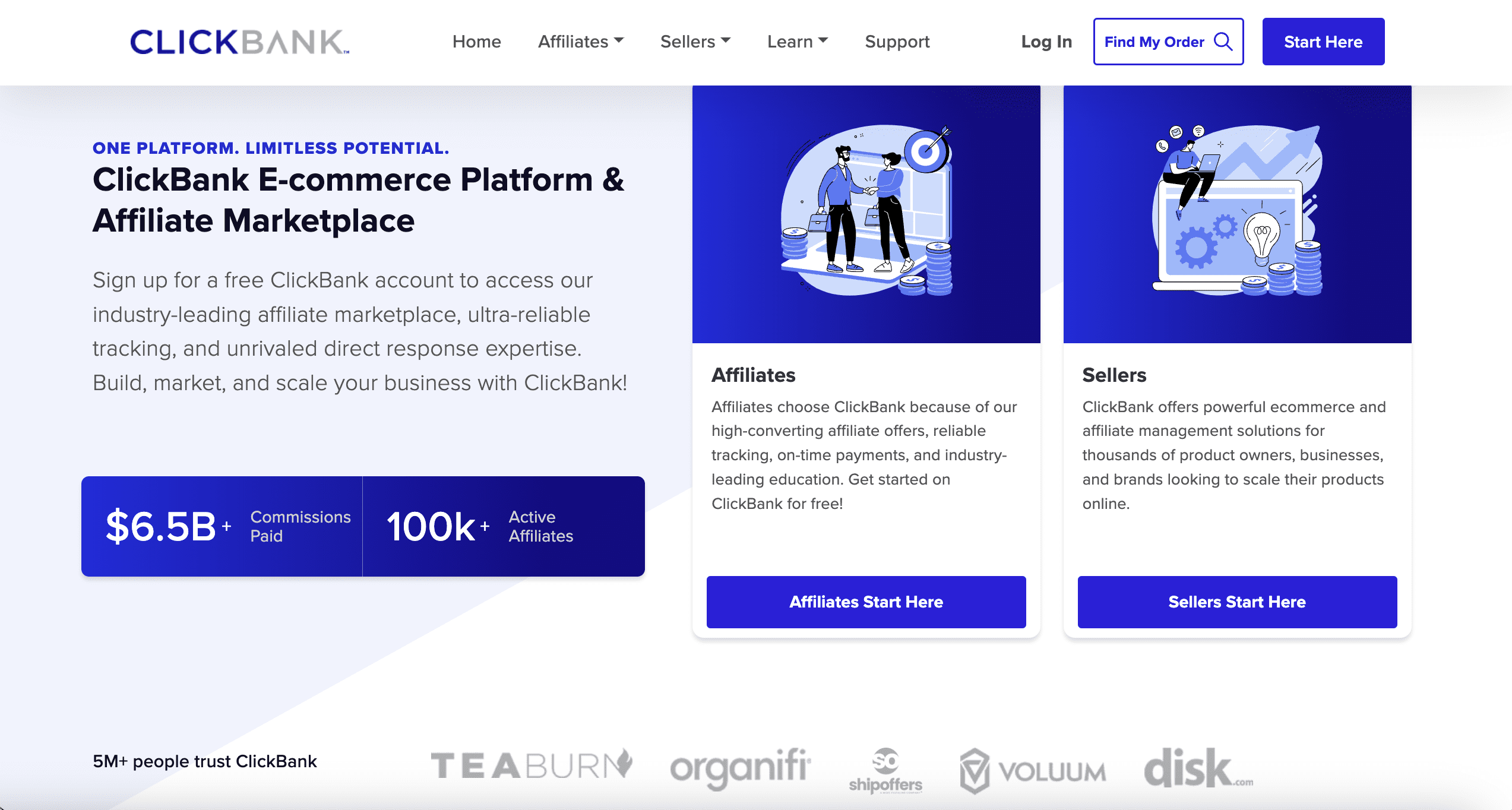


ClickBank was one of the first affiliate platforms, launching all the way back in 1998. Since then, it’s grown to one of the largest affiliate marketplaces with over 200 million customers.
According to the company’s website, there are 300,000+ daily purchases made on ClickBank – and it boasts $4.2B in paid commissions.
ClickBank stands out for its native support for subscription services, which makes it easy for brands to create one-click, repeatable purchases. This allows them to provide monthly products without requiring manual monthly payments.
It also offers some of the standard features commonly found on most affiliate platforms, such as affiliate reporting, payments, commissions management, and third-party integrations. It’s quick and easy to list your products and set up affiliate programs on the platform.
However, compared to some of the other affiliate platforms on this list, it doesn’t offer a demo, free trial, or monthly pricing. Instead, ClickBank charges a one-time activation to list products on the platform and then a fee per sale.
Pricing:
- One-Time Activation Fee: $49.95.
- Transaction Fee: 7.5% + $1 per sale.
7. CJ Affiliate



CJ Affiliate is a well-known and reputable affiliate marketing platform. It offers access to hundreds of advertisers, publishers, and potential partners in one platform.
CJ Affiliate provides a customizable dashboard and a variety of reports and specialized tools, including advanced tracking and reporting capabilities. Most notably, it offers specialized tools, such as Deep Link Automation and Product Widgets, that enable brands to improve their affiliate program ROI.
While CJ Affiliate is a great choice for businesses of all sizes, it’s worth noting that the company doesn’t provide a free trial or demo, operates on a performance-based pricing model, and you’ll need to reach out for specific details.
Pricing:
- Custom quotes are available upon request.
8. TUNE
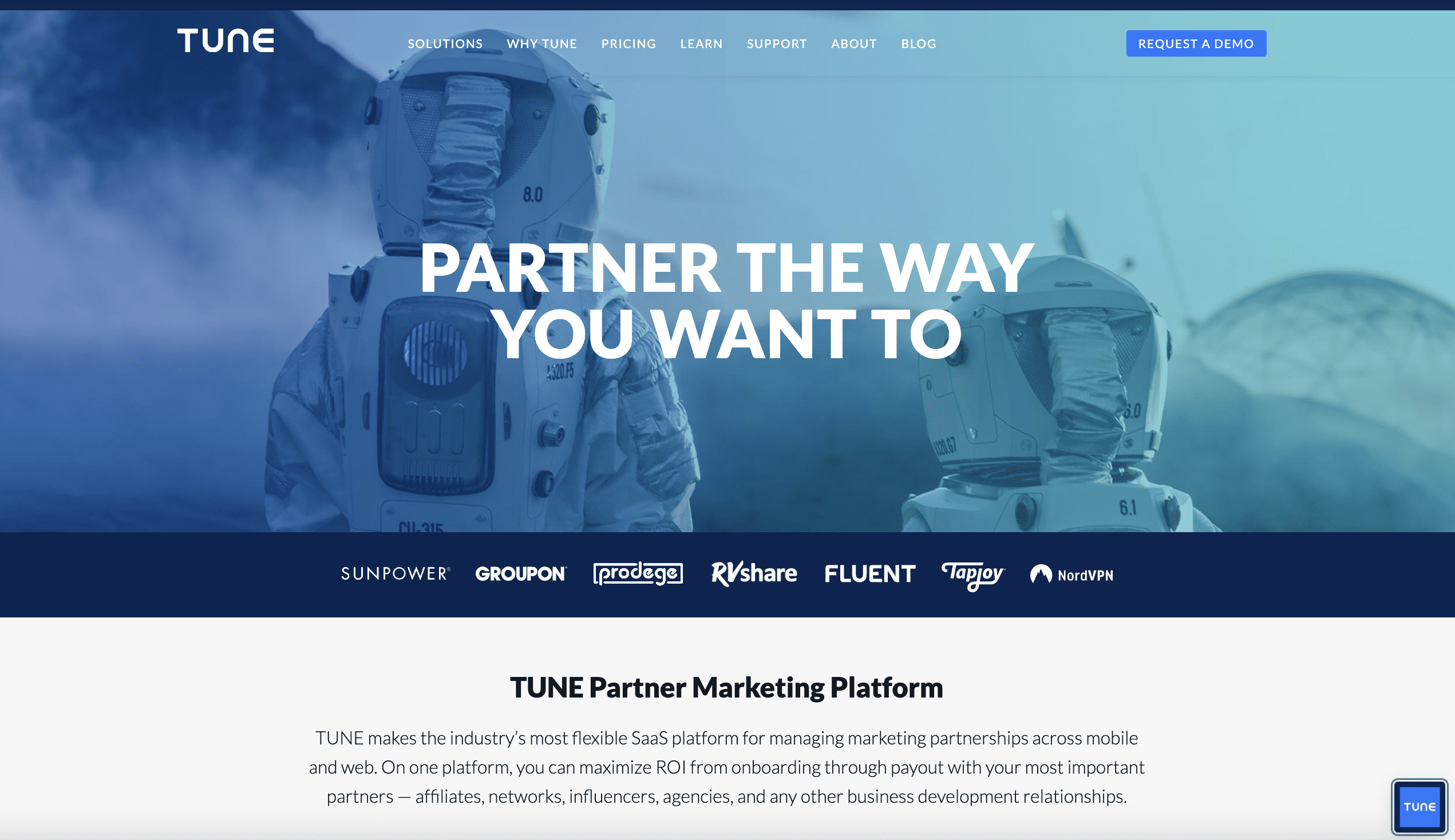


Designed for companies that require detailed tracking and analytics, TUNE allows brands to build, manage, and grow their affiliate partner networks through its proprietary marketing technology.
TUNE offers a flexible platform, which users can tweak and tailor to fit their needs. Within the platform, you have customizable tools, commissions, payments, and real-time affiliate tracking and reporting.
However, it doesn’t provide affiliate promotional tools like most other platforms, and there is no straightforward pricing listed on the website.
It does, however, list details on its different plans, including a Pro Plan with basic features up to an Enterprise Plan with features like custom integrations, premium support, enhanced fraud prevention, and more.
Pricing:
- Custom quote available upon request.
9. LeadDyno
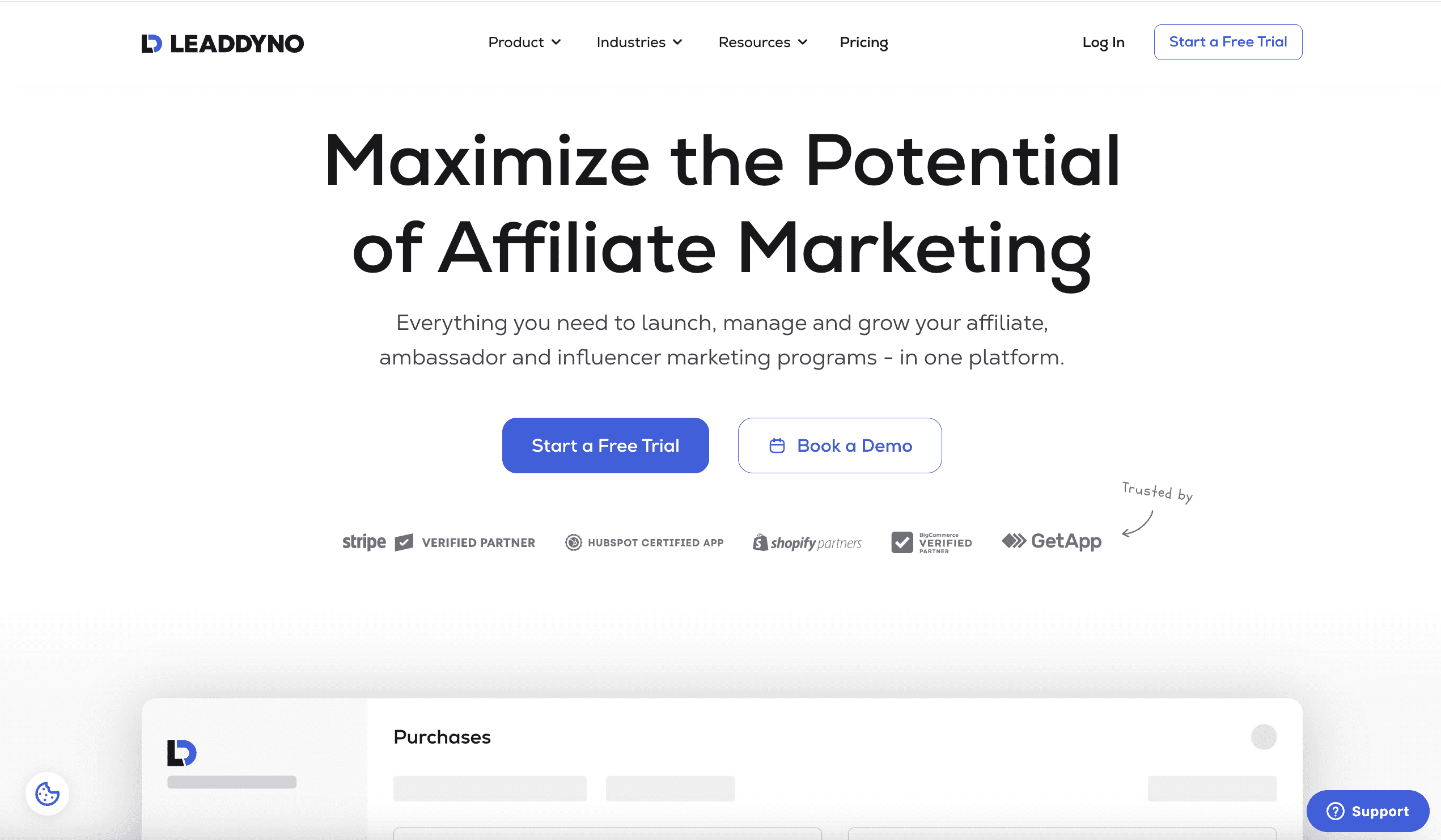


LeadDyno specializes in affiliate program promotion and perhaps offers the most promotional tools available in an affiliate marketing software platform.
LeadDyno offers tools that enable brands to create various promotional campaigns, such as email, newsletters, and social media campaigns, making it a wonderful choice for companies that want to expand the reach of their programs.
It provides a straightforward user experience that makes it easy to onboard affiliates, track your performance, and manage payouts. Extensive real-time tracking and reporting features give businesses the ability to monitor and optimize their campaigns.
Pricing is on the affordable side and LeadDyno offers a free trial – which not all tools on this list do!
Pricing:
- The lite plan starts at $49/month for up to 50 active affiliates, one commission plan, one reward structure, and other basics.
- The essential plan is $129.month and offers up to 150 active affiliates, three commission plans, and one reward structure, as well as other advanced features like a landing page, 1:1 call and video support, and more.
- The advanced plan is $349/month and offers up to 500 active affiliates, unlimited reward structures and commission plans, and many other advanced features.
- The unlimited plan is $749/month and offers unlimited active affiliates, unlimited reward structures and commission plans, and more.
10. ShareASale
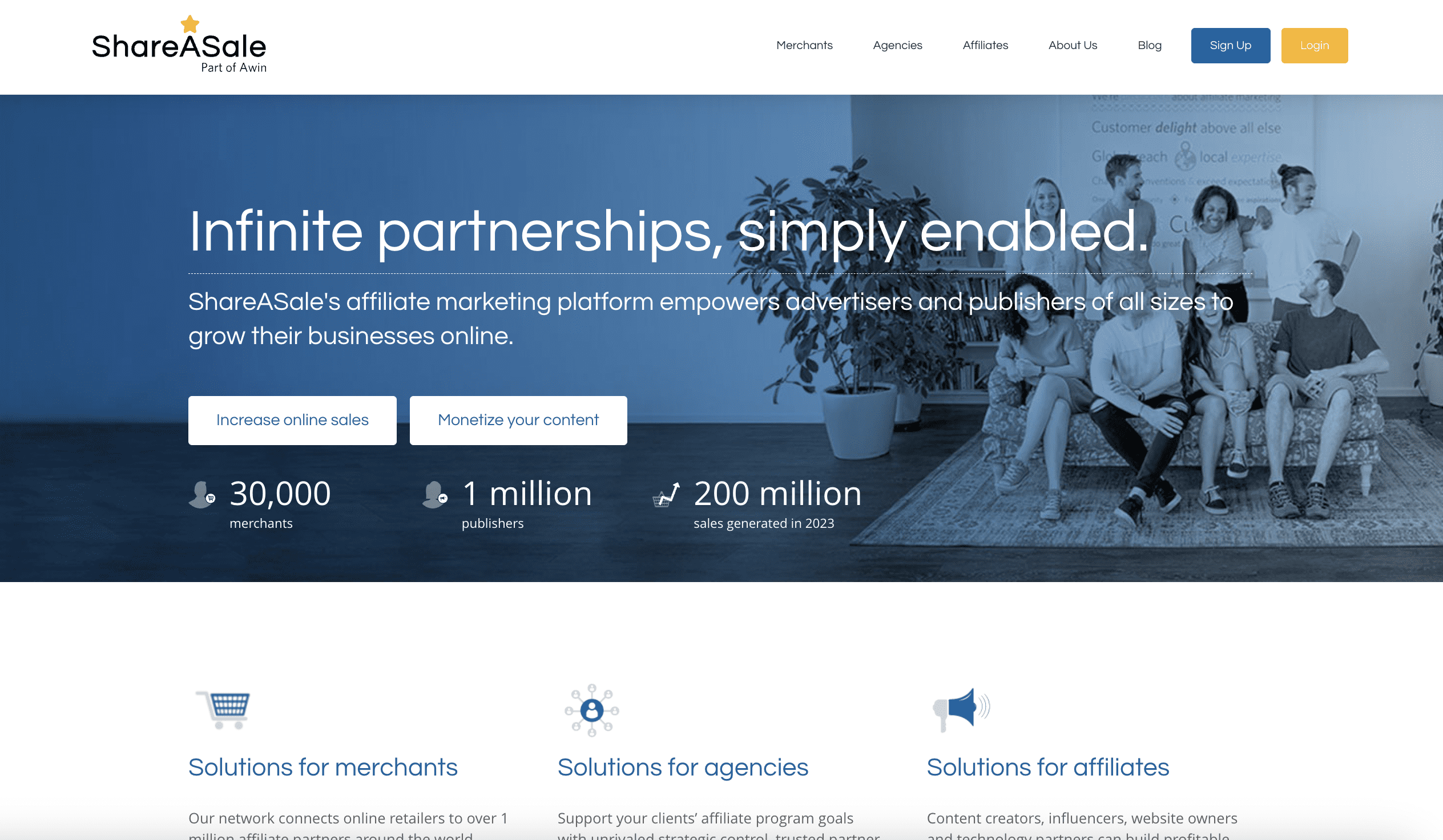


With over 20 years of experience, ShareASale has been around for quite some time. It’s a reliable solution for merchants and affiliates alike, and carries a variety of tools to help boost your affiliate marketing programs.
If you’re looking for an extensive network of affiliates and partners across a ton of industries, ShareASale is a good option for you. You’ll also get access to customizable affiliable management, real-time tracking, detailed reporting, custom banner, and link generation, and plenty more.
One thing to note: like a few of the other tools listed here, ShareASale uses a performance-based pricing model that includes a one-time network access fee and then transaction fees.
Pricing:
- There is a one-time setup fee of $650.
- Transaction fees: 20% of each affiliate commission, with a minimum of $35/month.
Wrapping Up
Great affiliate marketing solutions enable brands to easily launch and manage affiliate programs, as well as track referrals and sales made by their affiliate partners.
The best affiliate marketing software provides brands with all the tools needed to launch, promote, and grow their affiliate program.
At the same time, they provide customizable and easy-to-use reporting capabilities for real-time performance tracking.
Without reliable tracking and reporting tools, brands cannot effectively assess the success and profitability of their affiliate campaigns and partnerships.
More resources:
Featured Image: Panchenko Vladimir/Shutterstock

